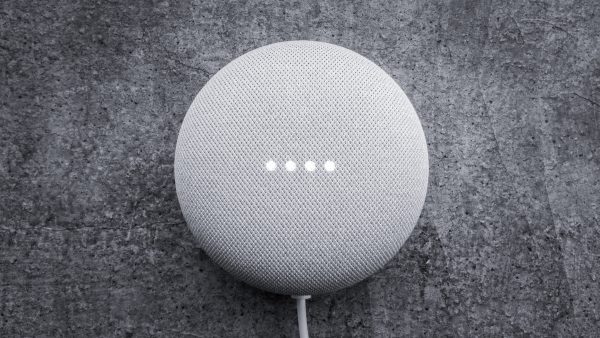
2022 was yet another eventful and uncertain year, filled with political and royal unrest and unique spectacles, like watching the World Cup final a week before Christmas.
Last year all of us continued to get back on track after the global disruption from the COVID-19 pandemic. However, economic backlash from the pandemic has been a colossal challenge, which has been exacerbated by the war in Ukraine.
But as we have worked to get back to pre-pandemic routines in some areas of life; 2022 has shown that new ways of working driven by the pandemic are here to stay. The most notable being the continuation of remote working, ever-increasing online sales and digital communication and collaboration.
To help you prepare for 2023, we wanted to review the key technology, behaviours and trends, to outline what we think will be crucial for delivering great customer experiences in 2023.
Artificial Intelligence (AI) and Machine Learning (ML)

First on our list is Artificial Intelligence (AI) and Machine Learning (ML). I am pretty sure that this won’t be the first time you’re hearing about these or the first time these have appeared in a technology trends list.
However, last year we saw more advances in these technologies and increased adoption of the technology by many organisations, including many of our customers.
In 2023, we expect that AI and ML technologies will play a significant role in customer experience transformation, and this isn’t just by reducing repetitive tasks for agents. We believe that there are several new ways these technologies can be used in customer service, such as:
- Personalised recommendations
- Chatbots and virtual assistants – real-time support
- Predictive maintenance & analytics
- Automated routing
Personalisation
The next trend we expect to see in 2023 is personalising customer experiences using personalisation software.
You don’t need to look very hard to see why this is valuable for businesses. Just think back to a time that you received a call addressing you by the wrong name or saw an advert for a product you would never use; I’m sure you can remember how quickly you lost interest in the product or conversation.
By personalising customer experiences, organisations are able to better understand and meet the needs of their customers, which can lead to improved customer satisfaction, increased retention, higher conversion rates, and greater customer lifetime value.
There are a number of tools that you can use to personalise experiences, but the key tool is personalisation software. This type of software utilises machine learning algorithms to analyse customer data and personalise experiences in real-time. Once implemented, personalisation software can create tailored product recommendations, targeted marketing campaigns, and unique website experiences.
Omnichannel customer experience
The last few years have seen a significant drive to a digital world and 2022 saw an increase in the number of channels that customers are using to contact organisations. The biggest increase was in the use of messaging apps such as WhatsApp and social media channels. This year organisations will continue to look for ways of promptly responding to their customers regardless of what channel they have used.
There are a number of tools that enable omnichannel customer support, allowing customers to interact with your organisation through a variety of channels they are most comfortable with. Working by integrating a variety of contact sources into a single interface, reduces the time taken to respond and find information from previous interactions.
Using omnichannel technology (Unified communication platforms), you can provide customers with a seamless and consistent experience across channels. For example, if a customer starts a conversation on one channel and then switches to another, the omnichannel solution can carry over the context of the conversation and provide a seamless transition.
Chatbots and virtual assistants
Chatbots and virtual assistants have been around for a while now, and some have been slower than others to adopt them. However, these are becoming more popular and useful.
A recent study by Oracle found that nearly three-quarters of consumers would prefer to use a chatbot to get quick answers to simple questions.
They are equally useful for organisations looking to drive efficiency as a study by LivePerson, found that chatbots are able to handle up to 82% of customer inquiries without the need for human interaction.
We expect to see more organisations adopting chatbots and virtual assistants in 2023 as organisations seek to automate certain aspects of customer service and support services. These technologies can handle routine tasks, freeing up human customer service representatives to handle more complex inquiries.
Voice-activated assistants

Smart technologies like Amazon Alexa, google hub and other voice-activated devices are continuing to increase in popularity, meaning that companies are expected to focus on optimising their customer experience for these platforms in 2023. This comes as 2022 saw an increase in the number of customers using them to get quick and convenient access to information and handle simple tasks and enquiries.
For some organisations, this may involve developing voice-activated applications or integrating voice functionality into existing products and services. By providing these applications with the necessary information and tools to integrate into your systems, customers are able to self-serve information, report issues and leave feedback without needing contact you directly.
Augmented reality (AR) and virtual reality (VR)
We believe that AR and VR technologies are another tools that will increasingly be used in customer experience transformation in 2023. A survey from Oracle found that 84% of CX stakeholders think that “VR and AR have the potential to supplant brick and mortar CX in the next five years”.
Primarily these technologies can be used to enhance in-store shopping experiences, provide virtual product demonstrations, and offer immersive training experiences.
An example of a this is fashion designer/retailer, Hugo Boss’s Virtual Styling Service that allows you to input your physical dimensions to create a personal avatar. Once your avatar has been created, you are then able to build outfits using the clothes on their website, to see a representation of how they will look on you in real life.

Customer experience management (CEM) platforms
Throughout 2022, we have worked with an increasing number of organisations looking to adopt customer experience management platforms to get a better understanding and track their customer journey.
These platforms provide valuable insights into customer behaviour, preferences, and needs, giving you access to information to analyse and fine tune customer journeys.
This can help identify areas where improvements can be made to the customer experience, such as by addressing common pain points or by offering personalised recommendations.
There are a host of features in CEM platforms, but the two that we think will be the most useful in 2023 are sentiment analysis and predictive maintenance and analytics:
Sentiment analysis

Sentiment analysis is certainly a growing trend, allowing organisations to get a full picture of how their company and products are received by customers, through a range of sources.
Working through a combination of natural language processing (NLP) and machine learning algorithms, which analyse text data, they can identify the overall sentiment expressed in that data. Once the data has been processed (in near real-time) processed, the data, it will make a decision on whether it is positive, negative, or neutral in sentiment.
This insight is exceptionally useful l for improving your customer experiences as you will be able to understand how your customers feel about your products, services, and overall brand. It will allow you to identify where pain points are occurring through negative sentiments and allocate resources to improve those areas. It can also allow organisations to prioritise complaints based on sentiment and even process and rank communications based on keywords such as ‘Donation’.
Predictive analytics
Predictive analytics is a one tool that enables you to stay one step ahead of your customers, by analysing past contact centre and customer experience data, to t predict future outcomes or trends.
In a contact centre setting, predictive analytics can be used to identify potential customer issues or needs in advance and proactively address them, improving overall customer experience. This will also help improve customer satisfaction, as organisations can identify potential issues before they occur, removing the need for customers to reach out themselves.
Overall, we expect that 2023 will see organisations looking to improve their customer experience by implementing technologies that provide more convenient, efficient, and personalised support and automate task to improve efficiency and reduce operational costs.
By taking the time to analyse where customer pain is occurring and allocating resources to patch gaps and provide a simple and stress-free service will deliver real improvements and competitive advantage.
Need help with 2023 planning?
Would you like to learn more about any of the technologies mentioned in this article?
Simply provide a few details below and select the areas of interest and our team will be in touch to share real-world examples of how these are helping organisations like yours.